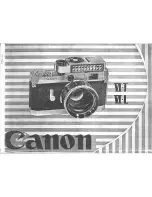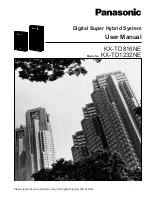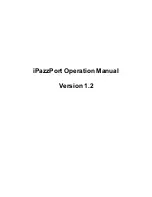
ACN-TL
experience quality
.
Rev. 6.00
www.ambient.de/en
23
12.
Application Notes
Basics of TC, Sync, ACN, and their use cases
Please also watch our video tutorials online:
and join the Lockit Timecode User Group:
https://www.facebook.com/groups/lockitusersgroup/
Timecode, Sync, and the importance of Genlock
One of the most common misconceptions is that timecode
is
sync but in fact they are both essential
components of synchronization.
“Synchronous” means same time. Now, while timecode is a required information
to
jam sync
several
units together and hence
make
them synchronous, it will not take care to
keep
them synchronous over
a longer time as it will not affect the speed the camera is generating frames. To achieve this a blank
signal commonly referenced to as genlock is required. This is essentially a blank video signal and
regardless of the recording resolution all cameras accept either 1080P or 1080i/PsF. Still, the
importance of genlock must not be overrated. As cameras have evolved so has their accuracy. While
external timecode helps to keep the time during power down sequences and avoids the necessity to
frequently check and rejam, in typical scene based productions using genlock is no longer an obligation
with file based cameras. They will hold frame sync long enough typically up to 30 minutes and only
when shooting longer takes such as live events that need to be edited the use of genlock and thus the
Lockit ACL204 becomes obligatory.
What also continuously leads to confusion is the fact, that there are no TC framerates that match 47.94,
48, 50, 59.94 or 60 video rates. This lies in the historic and physical nature of the SMPTE TC signal which
doesn’t allow for higher frame rates than 30 FPS. To simplify configuration, Lockits since firmware 6.00
allow sel
ecting double rates. This doesn’t change the fact, though, that on those settings the timecode
frame rate always will be the corresponding single rate.
Choosing the correct TC frame rate and video sync format
Timecode and Sync always have been a cause of confusion and irritation. However there are just a few
rules that, when understood and considered greatly help to get things right and with the intelligent
algorithms of the Lockit sys
tem and ACN it’s even easier.
First and upmost:
Lockit Stays on Camera!
This may sound trivial, but it is the most common cause of issues when post gets back with TC
consistency errors. Just jamming a camera and then remove the Lockit may appeal AC but it just
doesn’t cut it.
Also, camera department likes to think timecode being a concern of the sound guy only.
It is not. It is a concern of keeping everything in sync
–
sure, this one sound recorder, but these 2, 3, or
more cameras none the less - even more. Cameras drift, lose timecode unnoticed on power cycling and
so forth. There is a reason Lockits have been around for the quarter of a century and are still going
strong. If size is a crucial issue, ditch the genlock, opt for a NanoLockit, but external timecode stays on
cam.
Содержание TinyLockit ACN-TL
Страница 1: ...experience quality Lockit Timecode TinyLockit ACN TL Rev 6 00 ...
Страница 2: ......




































